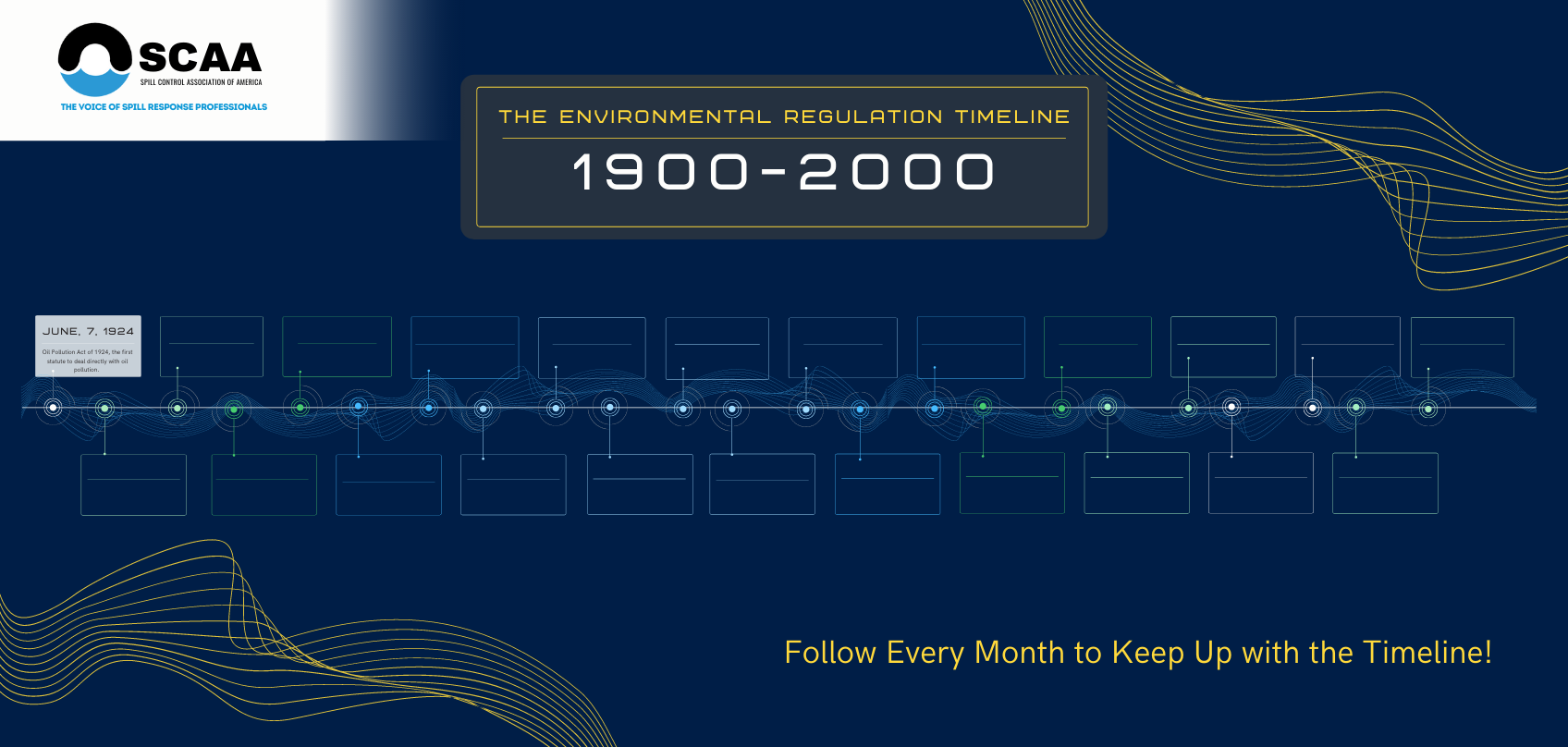Environmental Regulations Through the Years… How Did We Get Here?
As part of a network of response organizations, our SCAA members are fully engaged in the business of responding to, cleaning up, and mitigating pollution. Many changes have taken place over the years on how the U.S. responds to spills and new information and research will continue to help this industry evolve. In this new monthly segment, we will take a historical look at how our response capabilities have evolved from the early 1900s to the present while highlighting and summarizing some of the most influential events and regulations that have taken place!Oil Pollution Act of 1924 – June 7, 1924 (43 Stat.604; 33 U.S.C. 431 et seq.)
Many members of our industry are familiar with the Oil Pollution Act of 1990 (OPA 90) or even the Clean Water Restoration Act of 1966, but there are many out there that may not be aware of this act of 1924. Established under President Warren G. Harding, this was the first U.S. statute to deal directly with oil pollution and was designed to regulate coastal navigable waters with regards to intentional fossil fuel discharges from seagoing vessels.
Why Was This Act Established?
During this time, it was common practice by many vessels to discharge oil with ballast water when entering into navigable waterways and approaching the shore. Ballast water is taken on, and then later discharged, during the course of ship operations and it must be removed to accommodate changes in the weight of the ship to increase stability and to avoid other complications. In the early 1900s, it was common practice for nearly twenty years for vessels to clear out their fuel with this ballast water to return the ship to its original weight and to prepare for its return. Several news outlets at the time on both coasts of the United States reported the increasing dangers of this issue and the wildlife and environmental impact had become so widespread that the U.S. Congress decided to take action and implemented the Oil Pollution Act of 1924. Just shortly after this act was passed in 1924, a 600-barrell spill occurred off the coast of Ventura County Beach in California and, according to NOAA, spill from ships were considered a greater menace to our environment than shoreline leakage.
Why Is This Important?
Not only was the Oil Pollution Act of 1924 the first statute of its kind to compel agencies to enforce these rules and regulations through a $10,000 fine (roughly $165,000 in 2022) and a maximum of one year in prison, but it also paved the way for the United States to implement regulations over the years to protect our environment and create the industry we are a part of today! The Act of 1924 was eventually amended by the Oil Pollution Act of 1961, 37 years later, which expanded the scope of this discharge prevention to within 50 miles of land and in 1966 required those who have discharged the oil to remove it immediately in addition to the existing civil and criminal punishments. Because of this act, our industry began to take shape and became the environmentally protective industry it is today!
Have Anything to Add?
If you have any personal experience, perspectives, or involvement with these events we would love to hear from you and feature your anecdotes in next month’s segment!
Sources:
https://blog.response.restoration.noaa.gov/oil-pollution-act-1990-history-spills-and-legislation
https://www.in2013dollars.com/us/inflation/1924?amount=10000
https://www.livescience.com/9885-faq-science-history-oil-spills.html

Comments
Post a Comment